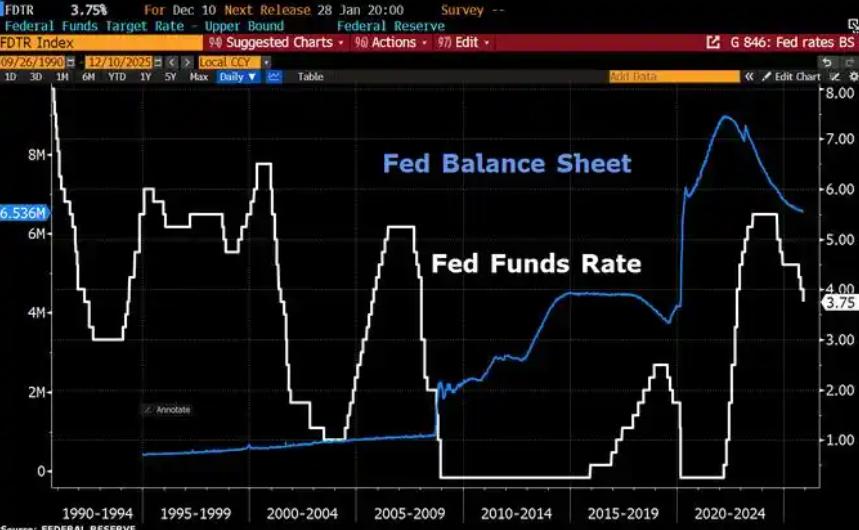
In the intricate chessboard of the global economy, the European economic bloc is undergoing profound transformations. The European Central Bank's (ECB) policy pivot and the delicate interplay between the UK's labor market and central bank policy expectations have emerged as pivotal forces shaping Europe's economic trajectory.
The ECB's policy shift has unfolded like a storm, stirring waves in the ocean of the European economy. Executive Board member Schnabel’s statement on "strengthening the euro’s international status" acted as a powerful current, propelling the euro to reclaim the 1.08 threshold against the U.S. dollar. Mechanistically, this statement triggered a surge in investor interest in euro-denominated assets. As investors anticipated the euro’s enhanced global standing, they flocked to euro assets—be it stocks, bonds, or other financial instruments. The influx of capital drastically increased demand for the euro, and per the law of supply and demand, this drove the euro’s appreciation. This trend was evident in the forex market: the euro’s strength attracted further international capital, reinforcing its position in the global monetary system.
Beneath this seemingly positive trend lurks a hidden danger of imbalanced economic structures in Europe. The widening yield spread between 10-year Italian and German bonds resembles a whirlpool in the storm, warning of rising debt pressures in peripheral nations. Countries like Italy have long relied on single-dimensional economic models—overdependence on sectors like tourism and traditional manufacturing—making them vulnerable to external shocks such as global economic fluctuations and trade frictions. Financially, peripheral states have grappled with persistent fiscal deficits and massive government debt. When the ECB shifts policy, altering market interest rates, their debt financing costs surge. Take Italy: with a large volume of government bonds, a shift in capital flows due to ECB policy reduces investor demand for Italian bonds. To attract buyers, the Italian government must raise yields, directly widening the spread with German bonds. This spread widening is more than a numerical change; it reflects heightened market fears of default risks in peripheral economies. Unchecked debt pressures could reignite a crisis akin to the European debt crisis, when Greece’s troubles spread across the continent, inflicting heavy blows on the European economy.
Turning to the UK, the April ILO unemployment rate held at 3.8%, suggesting relative labor market stability on the surface. However, the slowdown in wage growth hides deeper implications. In the UK economy, consumption is a primary growth driver, and consumer spending power is tightly linked to wage levels. Slower wage growth means disposable income expands more slowly, directly dampening consumer demand. For instance, households may cut back on non-essential purchases like high-end electronics or luxury goods. For businesses, weakened consumer demand leads to sluggish sales and falling profits, prompting production cuts, hiring freezes, or even layoffs—a vicious cycle that further strains the labor market. From a monetary policy perspective, the Bank of England (BoE) balances inflation and employment when formulating policies. Slower wage growth eases risks of wage-push inflation (as businesses face less pressure to pass rising labor costs to consumers) but also signals weakening economic momentum. This has dimmed expectations of a BoE rate hike: while hiking rates could curb inflation, doing so amid lackluster growth would raise borrowing costs for businesses and households, further suppressing investment and consumption and hindering recovery.
The ECB’s policy shift exacerbating market polarization, coupled with the complex dynamics between the UK’s labor market and policy expectations, highlights the severe challenges and uncertainties facing the European economy. The path to recovery ahead is fraught with thorns, requiring policymakers to implement precise measures, balance diverse interests, and defuse potential risks to achieve stable growth.

Since 2022, the Fed has cumulatively reduced its balance sheet by $2.4 trillion through quantitative tightening (QT) policies, leading to a near depletion of liquidity in the financial system.
Since 2022, the Fed has cumulatively reduced its balance sh…
On December 11 local time, the White House once again spoke…
Fiji recently launched its first green finance classificati…
Recently, the European Commission fined Musk's X platform (…
At the end of 2025, the situation in the Caribbean suddenly…
The U.S. AI industry in 2025 is witnessing a feverish feast…